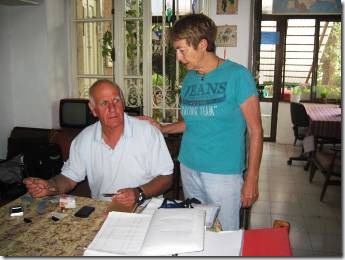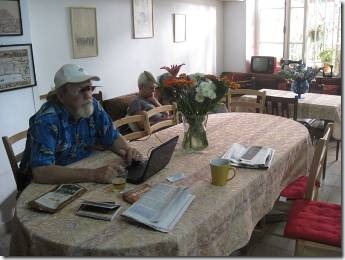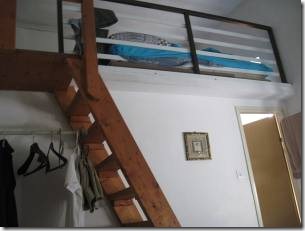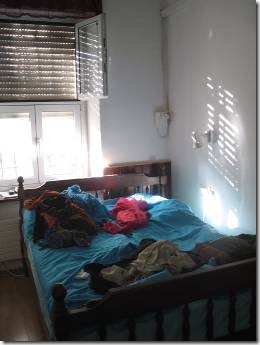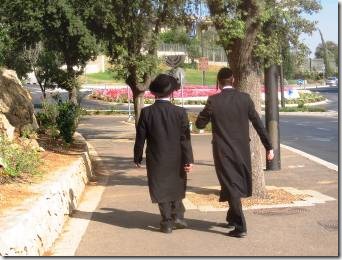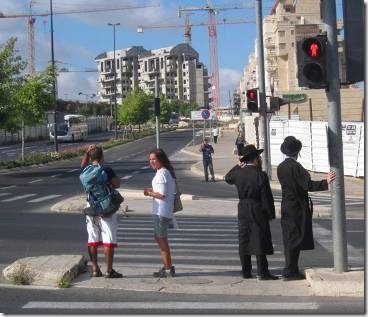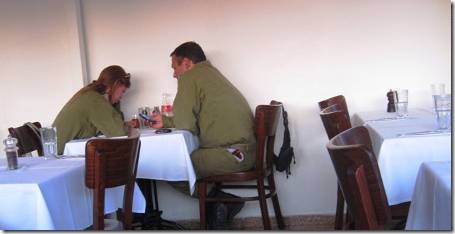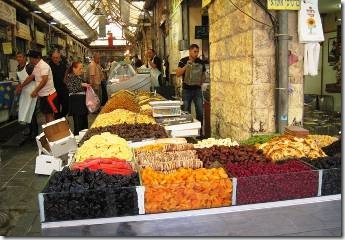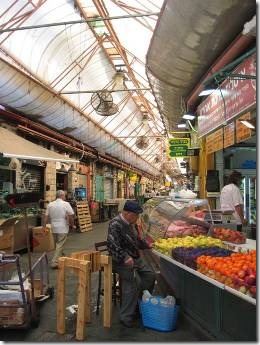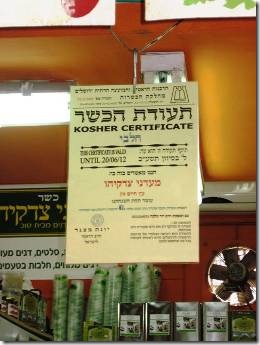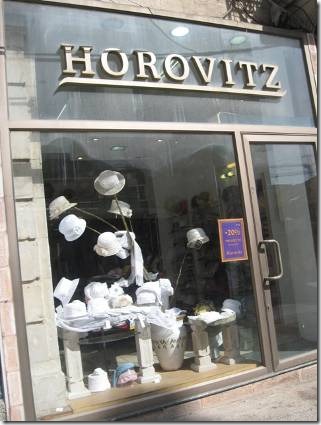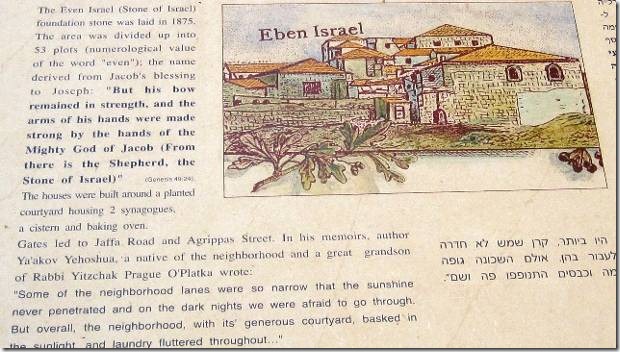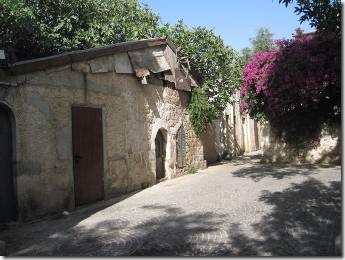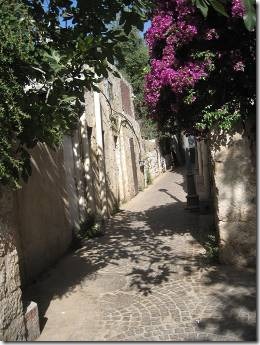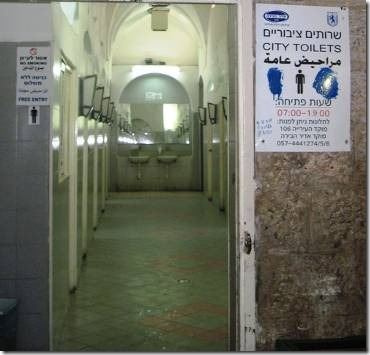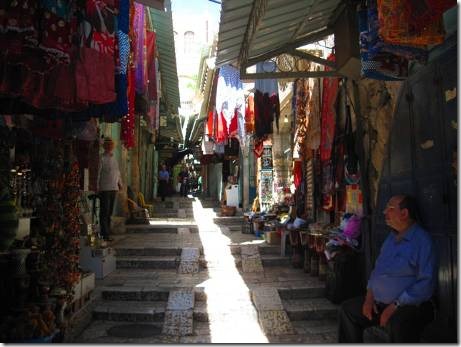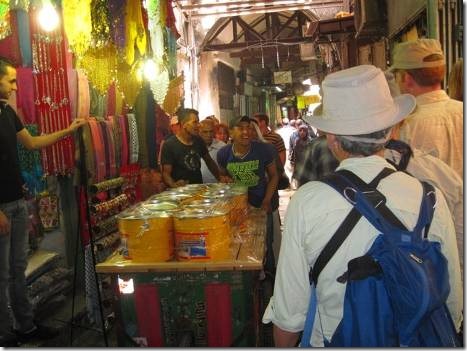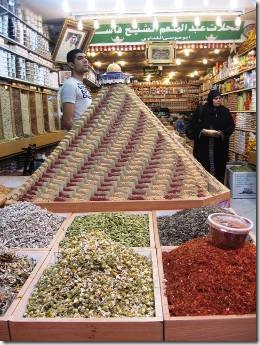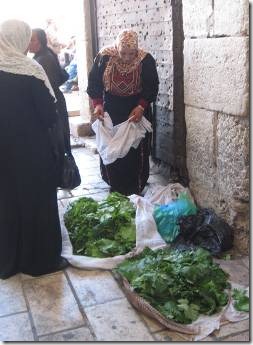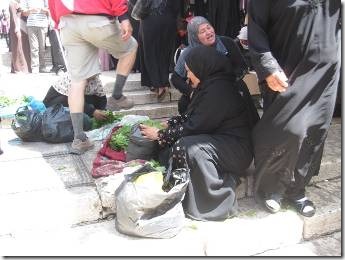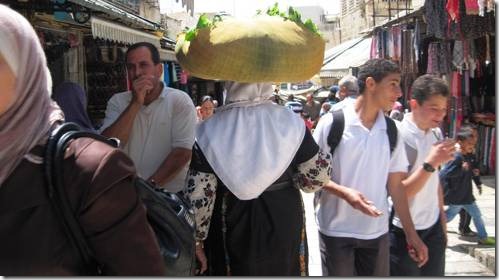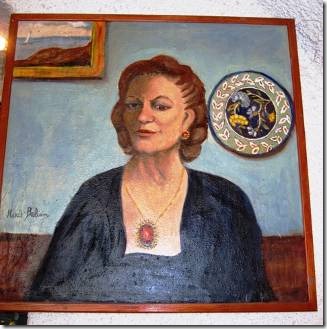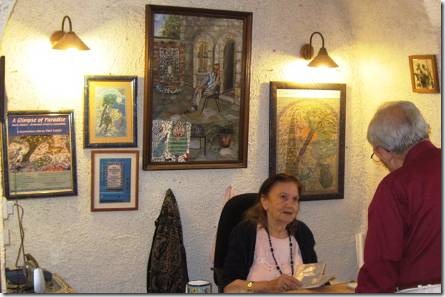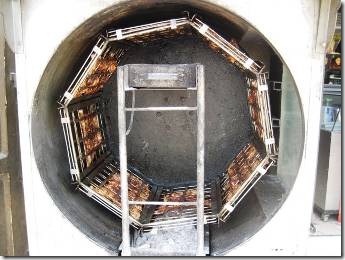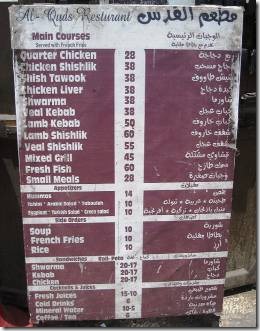Shalom,
I just finished cooking our dinner for tonight, kugel to celebrate Shavouot. Instead of a sweet kugel I sauteed onions, red peppers and some winter squash and mixed that in with the cottage cheese, white creamy Israeli cheese and 4 eggs. Now it’s after dinner and though it was a bit bland, everyone had second helpings and it’s half gone. If I make it again I’ll use cauliflower and mushrooms and some parmesan cheese.
I was really tired the night I sent out the long Jerusalem email and hardly mentioned my thoughts about the Hadassah Hospital and the Chagall Windows. The windows are located in the small, spare Fanny and Maxwell Abbell Synagogue in the hospital. The windows were quite beautiful, and breathtaking in their size and brightness in the small dim synagogue. If I’m being honest, I have to say that I had a harder time seeing the images in the darker red windows, but we had to look quickly. The “Chagall Windows tour” was an audio tape that moved along quickly so you didn’t have time to really LOOK at each window or ask any questions. When the tour was over you had to leave to make room for the next group. I think it would be lovely to be there and actually use it as a synagogue. My favorite part of the windows might be what Chagall said about them, “All the time I was working I felt my mother and father looking over my shoulder and behind them were Jews, millions of other vanished Jews – of yesterday and a thousand years ago.” During the 67 war several of the windows were damaged and I remember reading Chagall’s comment when he was told that some windows had been damaged. He said something like this, “You worry about winning the war and I’ll worry about repairing the windows.” The windows were repaired but one window was deliberately left with a bullet hole.
The hospital also has a sculpture garden and the pomegranate sculpture caught my eye. I seem to find them connected to every place I’ve been in the Mediterranean and spent long hours in North Cyprus trying to draw one. The shops here sell them in the form of Shabbat candle holders, tooth pick holders and just as “art.” I will get one when I find one that calls my name. “Make pomegranates of blue, purple, and scarlet yarn around the hem of the robe, with gold bells between them. The gold bells and the pomegranates are to alternate around the hem of the robe.”
-Exodus 28:33-34
And my mother was a member of Hadassah Women’s Organization and knitted wool hats for the Israeli soldiers.
So now we can move on to the lighter second part of “My Jerusalem.”
We stayed at the Allenby B&B just near the Central Bus Terminal making it very easy for us.
Danny Flax and his wife Puah were friendly and very helpful.
In the morning the tables are for breakfast; during the day for computers and chatting with the other people staying at the B & B. All of Danny’s accommodations stay booked up so we were lucky to get our room on the spur of the moment.
The 4 of us shared a room with a sleeping loft up-ladder and two beds and bathroom down the ladder.
It was comfortable and quiet and I slept well. Randal and I were down-ladder.
I must admit that I found the Hassidic men the most fascinating as it’s the first time in our travels we have encountered them.
At this corner in Jerusalem it was, “each to his own,” women in shorts standing next to men in black coats and hats.
A private moment for two soldiers seemed a story somehow.
We ate in a restaurant called Ima (Mother.) It was OK, but my Ima’s cooking was better. Funny enough the first night we actually ate in a fast food pizza place in the bus terminal (thinking it was the Mahane Yehuda market….long story, ….we were confused.) I had a giant piece of pizza with olive oil, black olives and the mixture of green colored herbs and spices that is used on bagels or other breads. I actually thought it was really good.
Mahane Yehuda market (not the Central Bus Terminal Market) was alive with lots of food and tempting smells; but we had eaten a great breakfast at our B&B so had no excuse to eat more.
Saw these signs lots of places in the market.
I had to take a photo of this Horovitz Hat Shop because of my Grandfather Horowitz who had a hat factory in New York.
Our goal for Tuesday was to visit the Temple Mount before 11 am, wander the Old City, see the Chagall Windows at 2 PM, retrieve our stuff from the B&B and catch the 480 bus back to Tel Aviv and then the 90 bus to Herzliya by early evening. So there wasn’t so much time to dawdle along the way. But I caught of glimpse of this hidden neighborhood not far from the Mahane Yehuda market so we stopped for photos.
Might be an interesting place to live for a while if we didn’t have a boat so I had to do some research.
Eben Israel ("Stone of Israel"). "Founded by a Building Society which built every year not less than six houses, and expected, at the
end of seven years, every one of its members to have his own house. It comprises 130 Tenements, and
about 650 inhabitants.
http://www.archive.org/stream/palestinepowerso00jann/ palestinepowerso00jann_djvu.txt
Another building society was called Eben-Israel, and another the name of Beth-Jacob. There have new
churches and new schools erected the last year. Sir Moses Montefiore advised them to build houses on the European style, leaving a plot of ground in
front large enough to plant the olive or the vine. He told them to secure as much land as they could in the \’icinity of Safed, Tiberias, Hebron, and •Jerusalem.
They asked him when they should commence certain buildings, and his answer was, " Begin to-day if you can."
http://www23.us.archive.org/stream/angloisraelorsa00withgoog/
angloisraelorsa00withgoog_djvu.txt
After our visit to Temple Mount we returned to the Church of the Holy Sepulchre for a quick second visit. We then wandered our way through all of the Old City streets and shops making our way to the Damascus Gate where we would exit for Nablus Rd. and the Palestinian Pottery shop.
When you gotta go, you skip all of the obvious signs that it’s a men’s bathroom and only focus on the words toilets and free. In a place where men and women pray or swim in separate areas, why we would think they would share a public toilet, I don’t know. Linda, Charmaine and I got out alive with a funny story to tell. The “Ladies” was around the corner and out of our line of sight so we never even thought to look for it.
the narrow streets were dark and light and every shop seemed to sell exactly the same thing as its neighbor shop.
Get outta the way! Carts loaded with whatever would push past with barely room to spare.
With Linda leading the way and some assists from shopkeepers, we made our way to the Damascus Gate. I have to say, no part of the Old City felt any less safe or less interesting than any other. And this was just two days after the "Jerusalem Day events" so who knows. We don’t live here, and choose to live in the United States or Canada, in the case of Linda and Charmaine, so we really should not have opinions about what life is like for those who do live here.
A spice shop that smelled wonderful and looked beautiful.
Women selling herbs and a glimpse of Randal’s “too short for the Temple Mount shorts.”
She may have been carrying her load on her head to save her hands for her cell phone: you see both images, ancient and cell phones.
So we exited the Damascus Gate, crossed the main road and I helped stop a fight among some very angry teenage boys. Don’t worry, I didn’t physically try to break up what looked like a very emotional fight. But one teenage boy was being beaten up by several boys and that’s just not okay. So I walked towards them yelling and then several adult men took over and separated the boys who were still very very angry. But there was nothing we could do except leave it to those who could actually talk with the boys.
We went off to find the Palestinian Pottery which was started and run by an Armenian family originally from Turkey.
Marie Balian, Matriarch of the enterprise.
Here she is at her shop
http://www.palestinianpottery.com/
GARDENS MADE IN JERUSALEM :FAMILY TILE TRADITION RISES TO REALM OF ART
Jane Friedman June 18, 1992.
Since the early part of this century, on a winding street not far from the imposing walls of Jerusalem’s Old City, a family of Armenian potters has been turning out gracefully painted bowls, plates and tiles from an obscure atelier, continuing a Middle Eastern art form that began in Persia in the 13th century In recent years, western visitors to the Middle East — journalists and diplomats especially — became avid fans of Palestinian Pottery, descending on the atelier and returning to the United States with the firm’s decorated bowls and tiles. The objects became collectors’ items among people who frequented the Near East.
Now, the work of one family member, Marie Balian, 67, has been elevated to the status of fine art. In "Views of Paradise," an exhibit in the International Gallery at the Smithsonian’s S. Dillon Ripley Center, her glazed wall panels — arranged around a glistening Arabian fountain — have received international recognition. It’s the largest space ever devoted to contemporary Middle Eastern art at the Smithsonian.
Balian’s work, like most art from the Arab world, is decorative. Because Islam bans depictions of humans, traditional art forms — like painting and sculpture for example — have long been eschewed. But applied art, like ceramic painting, has been a long tradition.
The show comes, oddly enough, at a time when Balian’s children are becoming known in the Washington area for their work on kitchens and baths. In the late 1980s, Balian’s son and daughter, operating out of a studio in Springfield, began to sell hand-painted tiles with Middle Eastern motifs for kitchens and bathrooms. The works of Marie Balian offer a "view of paradise" compared with the more earthbound work of her children.
"The children are artisans," says Gus Van Beek, the Museum of Natural History curator who organized the show. "I regard Marie Balian as an artist. We have never seen a tile painter equal to her."
The show brings together 22 wall panels that Balian did during the late 1980s and early ’90s. They depict lush gardens, swirling with garlands, flowers, gazelles, peacocks and birds and frequently framed by an arch to give the feeling of a view from a window. The panels give an idea of how a room is transformed when such tiled scenes are set into a wall, the way they are in the Middle East.
Balian’s work combines both Armenian and Islamic elements, drawing on traditions rooted in Persia, now Iran, and Turkey going back to medieval times.
"It’s very easy for me," said Balian, speaking of her art while sitting in front of her panels at the Smithsonian. "It’s as if I did this in an earlier age."
Balian’s family, as far back as she knows, had been potters in the town of Kutahya, Turkey. In the 13th century, Persians fleeing invaders from Central Asia streamed west into central Turkey, infusing life into a local ceramics tradition.
In 1919, a branch of the Balian family came to Jerusalem, commissioned by the Ottoman rulers to repair the 15th-century mosaic tiles on the Mosque of Omar. The mosque, which dominates the ancient Temple Mount, had been damaged during an earthquake.
The money for the project never materialized, but the Balians stayed on in the Holy Land, dissuaded from returning home because of the massacre of Armenians by the Turks. In 1922, they set up shop in East Jerusalem. Eventually, Setrak, the eldest son, began to churn out bowls and urns.
Painted decoration was simple until Setrak, on a visit to France, met Marie, a distant cousin whose family also hailed from Kutahya. She had been studying fine art in France. After they married, Marie Balian set about applying her vision of Eden to the bowls and plates produced in Jerusalem.
Then, in 1967, the world changed. As a result of the Six Day War, Jerusalem was unified and diplomats, academics, and journalists based in Israeli West Jerusalem now discovered Palestinian Pottery in the eastern half of town. In 1969, Van Beek, conducting an archaeological dig near the Gaza Strip, also discovered it. From then on, he and his wife would visit the Balians each summer, encouraging Marie Balian to do more of the large panels that she had begun to experiment with.
By 1990, she had done major commissions including wall panels for the salon at Israel’s presidential residence. Once there was a body of work, Van Beek began to lobby the Smithsonian for a show. The exhibition has been extended three months and will likely travel afterward.
The artisan tiles of Balian’s children, Sylva and Neshan, charmed Tammy Haddad, senior executive producer for "Larry King Live," who is a Syrian-American. Haddad noticed the tiles at a kitchen boutique and hired the younger Balians to do the kitchen in the Palisades home she and her husband bought.
"I thought they were beautiful," she said of the tiles. "They’re not like other grapes or vines. They were so beautifully detailed."
The Balian’s company, The Ceramic Tile Studion in Alexandria, Va , sells the artisan tiles through several kitchen and bath showrooms in the Washington area.
Because of the strife in Jerusalem between Jews and Arabs, Marie Balian hopes to work part of the year in the Washington area. She says the local foliage will not change her Middle Eastern view of paradise which, she says, is firmly etched in her mind.
http://palestinianpottery.com/washingtompost1.html
But I have to say our favorite is still the Dizayn74 Pottery that we visited in Cyprus and where I bought my small pitcher and pit dish: but this is an interesting glimpse into one family’s story.
Then it was lunch time!!
Al-Quds Restaurant just across the Sultan Suleyman Rd. from the Damascus Gate.
I had a great chicken pita sandwich real French fries and lots of meze salads. If you’re ever there, I recommend Al-Quds.
So we had a great trip and made it home with only a small glitch. We couldn’t easily find the stop for the 90 bus from Tel Aviv to Herzliya. But we did find it, and now we know, and soon we’ll move the boat to Ashdod and have to learn all of the bus routes in Ashdod. The plan is to leave Herzliya and move to Ashdod for the month of June. It looks like I might find a Hebrew School there and even some art classes so that will be good. More about that when it happens. But next email, our tours of Jericho and Bethlehem.
Ru
DoraMac

